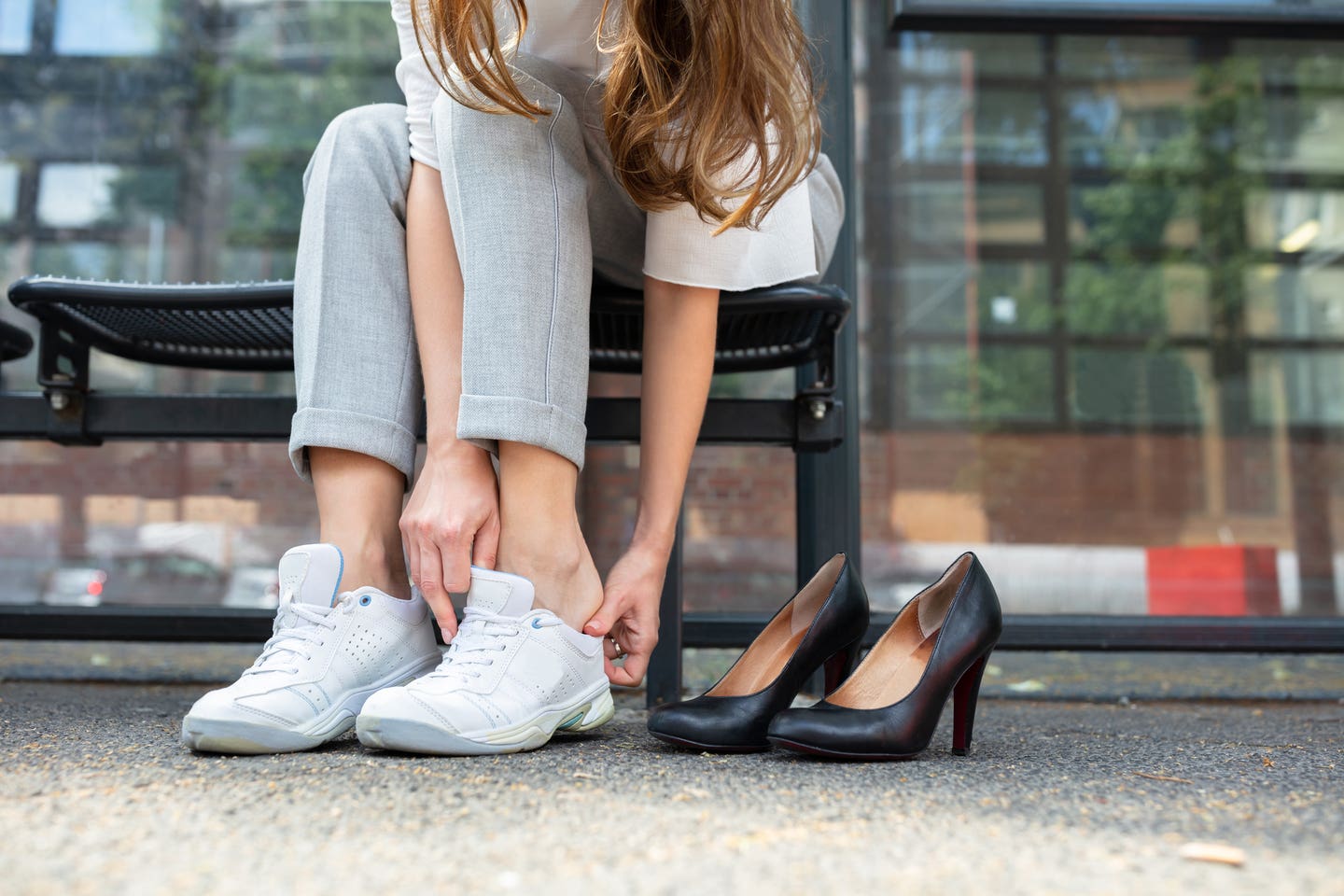Think Feet First This Summer!
Warm weather inspires the sleeping athlete in us all. On the road or on the treadmill, the wrong running shoe can cause injuries that can ruin the rest of your summer. Check…

Close-up Of Businesswoman’s Sitting On Bench Wearing Comfortable Shoes
Warm weather inspires the sleeping athlete in us all. On the road or on the treadmill, the wrong running shoe can cause injuries that can ruin the rest of your summer. Check the thickness of your soles. According to a recent study from the University of Florida, runners wearing thick-heeled sneakers were more likely to get injured than those wearing flatter shoes. Allowing factors like age, weight, running volume, and competitiveness, they concluded shoes with thicker heels confused runners about their gait — they could not accurately identify how their foot landed with each step.
Old, worn out, or ill-fitting shoes are also a safety risk. Worn shoes have lost their cushioning and ill-fitting shoes not only can cause painful blisters, but they can also force your toes into unnatural positions, which can affect the contour of your foot over time. Adjusting your walk to make your shoes feel comfortable can lead to back and hip issues.
Lucky Feet Shoes, a California shoe store chain, offers tips on choosing the best shoes for running. They recommend shopping in the late afternoon or right after a run, because this is when your feet are thought to be at their most accurate size. Allow an inch of space between your big toe and the end of the shoe to give your toes room to wiggle. Wear athletic socks while you try them on to see how much room you have. Finally, check the material and construction to determine how long they will hold up.
Proper footwear is essential to prevent injuries for children. The American College of Foot and Ankle Surgeons tells us that active kids are more susceptible to foot and ankle pain from lack of protection and overuse injuries or ailments, including puncture wounds, plantar warts, sunburns, and ankle sprains.
While they are not made for running or sports, the lowly flip flop can help prevent puncture wounds from hidden dangers such as sticks and glass in grass or in the sand. They can also help prevent plantar warts or other infections when children are walking on pool decks and in locker room showers.
Summer sports and outside play also increase the chance of a sprained ankle, especially if you’re barefoot or wearing inappropriate footwear. Repeated or untreated sprains can cause chronic ankle instability, so take them seriously with RICE: rest, ice, compression and elevation; and if symptoms continue, call the doctor.
According to the US Soccer federation the correct shoe can help prevent the 10 Most Common Foot Injuries. Learn more about foot and ankle safety to keep your summer fun.
Is driving more dangerous during warm weather months? Yes, thanks to your shoe choices! Safe driving depends on complete control over the gas, brake, and clutch pedals. Reader’s Digest has compiled a list of the riskiest footwear fashions. At the top? Flip-flops, which are notorious for breaking or falling off. Flip-flops, sandals, and mules are the most dangerous choices, if you can’t keep them on, they can end up caught or stuck under the pedals. Wedges, platform shoes, and thick-soled boots impact your ability to apply the correct amount of pressure on the gas and brake. High heels prevent your heel from contacting the floor, the position that allows the best control of the pedals. They can also get caught in the carpeting, trapping your foot in place.
The best choice for driving? Thin-soled shoes such as sneakers, flats, or loafers. Don’t forget, you can stay fashionable and safe, just toss a pair of driving shoes into the car to change into for when you get behind the wheel.
The U.S. Consumer Products Safety Commission estimates more than 37,000 Americans suffer a power mower-related injury each year, so the American College of Foot and Ankle Surgeons are also worried about lawncare accidents. Your power mower’s blades whirl at 3,000 revolutions per minute and produce three times the kinetic energy of a .357 handgun all at foot and ankle level. Your reel mower has sharp blades. Foot injuries from any mower can range from dirty lacerations to severed tendons to amputated toes. Wear heavy shoes or work boots when mowing — no sneakers or sandals — and treat any mower-related injury seriously, from the smallest nick, with proper first aid to avoid serious infections later.
THE702FIRM Injury Attorneys is a proud sponsor of Beasley Best Community of Caring Family Safety Awareness Month.



